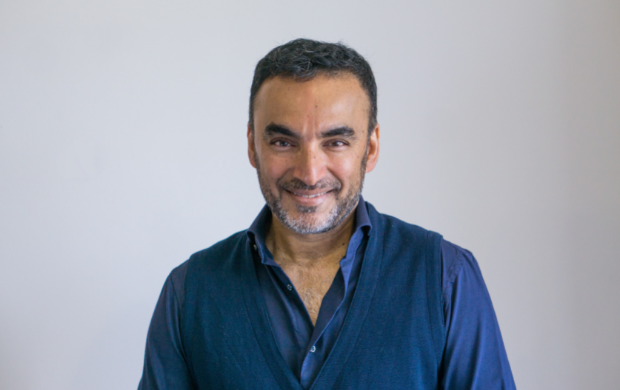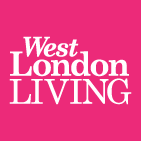You’re the founder of Laila Aesthetics Clinics and a mentor for American Academy of Aesthetic Medicine students! It seems like there are quite a few different paths that lead to working as an aesthetician. Could you tell us about your own journey?
Indeed, there are so many different paths for Aestheticians. My journey started when I enrolled for a Bachelor of Medicine, which consequently led me to work as an Anaesthetist for the NHS for over 25 years with a specialisation in Acute Pain Management and Regional Anaesthesia. This allowed me to build a robust understanding of medical procedures, standards, and most importantly, over two decades of experience to rely on.
However, after having achieved my goals, I was seeking a different challenge. Ever since I can remember, I was always drawn to art, form and beauty. Somehow, I stumbled across Medical Aesthetics and was naturally drawn to its beautiful combination of science and art.
In 2016, I decided to embark on a journey, undertaking a Basic Foundation Course and over the next two years, I invested in further advanced training, obtaining the American Academy of Aesthetics Medicine’s (AAAM) Certification, Diploma, and Board Certification (their highest qualification).
Since then, I have been performing non-surgical aesthetic treatments and building a client base in Yorkshire, Cumbria and most recently London. Year on year, I have undertaken training in more advanced treatments, adding them to my repertoire and leveraging my medical background to offer patients a wide range of safe, state-of-the-art, and medical-grade aesthetic treatments.
Over the past two years, I have started to focus on training and education, looking to help young practitioners take the right steps towards becoming professional and ethical aesthetic medicine providers. I’m currently working with the AAAM faculty as a trainer for international delegates attending their courses, in addition to running online training courses on the educational platform Udemy.
As a doctor, I have always worked in a people-facing role, and with Medical Aesthetics I am driven by the opportunity to build sustained long-term relationships with my patients fostered on trust, integrity and experience. A partnership where I can help them look and feel the best they can.
Looking back on my journey, I truly believe one cannot excel in this industry without a grasp of both the medical side and the art side of it. Understanding anatomy in-depth is no doubt is useful, however, it does not make you an expert in creating form/contour, or for that matter, in recognition of beauty.
In the past, having “work done” was very much something to be hidden and denied, but it seems that we are far more open about it now. What do you think has changed?
The stigma has shifted no doubt. In the last decade, huge progress has been made in the world of aesthetic or cosmetic work and this plays a large part in the shift. However, societal changes have also had a part to play.
In the past, the options were limited to plastic surgery which was very expensive, less accessible and therefore less popular. I believe this caused a negative stereotype, where the uber-rich housewife “had work done” and the many felt it was indulgent and vain.
Thanks to advances in technology and R&D, now you can have anything from a chemical peel, micro-needling to an 8-point facelift in your lunch hour for a few hundred pounds. Aesthetic treatments are much more accessible, and more and more people are trying them, having good experiences and telling their friends about it.
Back then, social media wasn’t where it is today. Now, with our daily photo-sharing habits, many more people are feeling much more social pressure to care about the way they look than perhaps in the past.
There is a never-ending stream of people sharing their experiences and results with their followers, in addition to celebrities endorsing treatments, further popularising the industry. As something becomes more popular, people tend to become more open to it
What have the most common skin complaints been from patients over the last couple of years?
Well, over the Covid years, there has certainly been a rise in complaints about Acne or “Maskne”, caused by extended use of face coverings, something I have written about in a published article for the AAAM.
Along with this, general complaints about skin quality and ageing has risen a lot recently. More and more people want to learn about skin rejuvenation treatments. I wonder whether this is a result of the increased amount of screen time, with people staring at their faces for lengthy periods with the recent popularisation of video calls.
What are the most important questions to ask when looking for the right aesthetician?
- What are their credentials and experience? Do your research and see if they have an appropriate background and quality training.
- What are people saying? Read their online reviews to see what their past patients are saying. Also, check their social media channels for results and comments.
- Who else is there? Make sure to compare a few different practitioners and if possible book consultations with a few of them to compare and see who you feel more comfortable with.
- Was there consultation robust? Did it make me feel 100% comfortable? Ensure there is a robust consultation and a review process in place. The best practitioners will dig deep to make sure they do what is best for you and create a tailored plan to ensure the best results.
- Shall I take some time to research properly? Don’t rush your decision: take time to research your practitioner and the treatment of choice to guarantee a well-thought decision.
With celebrities and influencers recommending skin rejuvenating treatments online, has there been an uptake in young people coming to the clinic?
Social media and celebrity endorsements have most certainly increased interest in aesthetic work for young people, mainly for fillers and lifts. The market for fillers and Botox has blown up in recent years.
I do believe celebrity endorsements from people such as Angelina Jolie and Gwyneth Paltrow have also inspired more and more women in their 40s and 50s to seek out aesthetic treatments. Not only women actually, I believe Brad Pitt is a fan of microneedling, and I can say I have seen an increased interest from men in their 30s onwards.
You’ll always have the next new treatment endorsed by a celebrity. I’d like to remind people that no two patients are the same, what suits one person does not apply to the other. Always discuss this with your practitioner and make sure you choose a treatment that works for you, not something your favourite celebrity has endorsed.
What do you think is the right age to start looking at injectable treatments like Botox, Filler and Profhilo?
I don’t think there is a magic number. Of course, I would not recommend any of these treatments for someone in their teens as most people are still developing into their 20s.
In most cases, people’s skin condition remains youthful until around mid 30s. So in terms of using those products for skin rejuvenation, that age group is where your skin could do with some subtle improvements.
However, if anyone over 18 comes to me with problems, I take them for their own merit. We’ll have a detailed consultation with no short-cuts, assessing their mental well-being and ensuring they understood not just the treatment, but its implications, side effects, duration, failure to match expectations etc…
After a thorough consultation and if in doubt I’ll discuss the situation with my peers to ensure that I am doing the right thing.
What are your top at-home tips for anti-ageing?
- Hydration – make sure you’re drinking enough water daily. This will help keep your skin hydrated and maintain its elasticity, as well as helping your body flush out toxins that damage your skin.
- Healthy Lifestyle – enjoy yourself, but try to avoid smoking, alcohol and sugar as much as you can. Incorporate exercise and healthy eating into your lifestyle as these play a great role in your skin health.
- SPF every day – the most important preventative action you can take is to use daily SPF protection. It is a must. Make sure to choose a product that protects against both UVA and UVB rays.
What advice do you have for people who react sensitively to actives like retinol?
If any of my patients were hypoallergenic, I would recommend a patch test to try and identify the ingredient that is responsible. Sometimes, it can be the preservative or carrier solution within the drug or compound. Here, you can look at seeking a preservative-free formula or try a different brand and test it.
Most importantly, communicate this with your doctor because although we have easy access to OTC Retinol, it should be treated as any other drug and caution applied to its usage. There will always be alternatives.
What’s your favourite in-clinic treatment for anti-ageing at the moment?
To be honest, I don’t have a single favourite treatment to highlight. However, I’d like to use this question as an opportunity to promote patient-specific tailored combination treatments.
As mentioned before, I always emphasise the need for a detailed consultation and use this time to address concerns, expectations and, of course, discuss time frames.
I always say to my patient, you cannot achieve it all in 1 session and a series of treatments may be the best solution to achieve the agreed desired goals.
For example, a combination of microneedling with skin boosters is something I am getting great results with when it comes to skin rejuvenation. This is very popular as it can be done on all skin types with very few exceptions.










